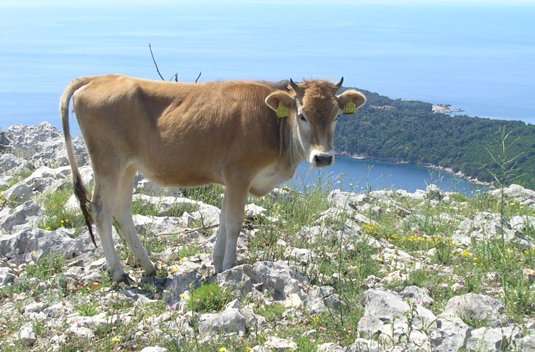The startling diversity of Buša cattle

In a study of the genetic structure and population dynamics of a unique breed of cattle that is indigenous to Southeastern Europe, LMU researchers have discovered a remarkable degree of genetic variation.
The Buša breed is a threatened autochthonous strain of cattle found in Southeastern Europe. The remaining herds are small and widely separated from each other throughout the Balkans region. A team led by Dr. Ivica Medugorac, who heads the Population Genomics Group of the Department of Veterinary Sciences at LMU, has now explored the range of genetic diversity within the surviving Buša herds and compared it with other European breeds. The findings appear in the journal Molecular Ecology.
In collaboration with colleagues in Southeastern Europe, Medugorac analyzed DNA samples from 1828 cattle representing 60 different European breeds and strains. The samples obtained from 350 Buša cattle from seven Balkan countries were subjected to genome-wide genotyping for single-nucleotide polymorphisms, and found to represent 14 distinct strains, which together comprise a single metapopulation. Indeed, the genetic analyses revealed that Buša cattle account for a significant proportion of the neutral (non-selected) genetic diversity found within the species Bos taurus woldwide. "Buša cattle are unique. They have undergone very little artificial selection and are therefore very valuable for sustainable breeding programs. Their conservation is of great significance for efforts to maintain the global genetic and functional diversity of cattle," says Ivica Medugorac.
In contrast to modern European breeds, Buša cattle are small, hardy, fertile and very well adapted to mountainous terrain in which they originated. In Southeastern Europe they are used extensively as sources of milk and meat, and in earlier times they also served as draft animals. In the new study, the authors outline a concept for an international action program to conserve the Buša breed. However, the model can also be applied to other domesticated animals, as well as to populations kept in captivity or under otherwise controlled conditions.
More information: Jelena Ramljak et al. Conservation of a domestic metapopulation structured into related and partly admixed strains, Molecular Ecology (2018). DOI: 10.1111/mec.14555
Journal information: Molecular Ecology
Provided by Ludwig Maximilian University of Munich




















